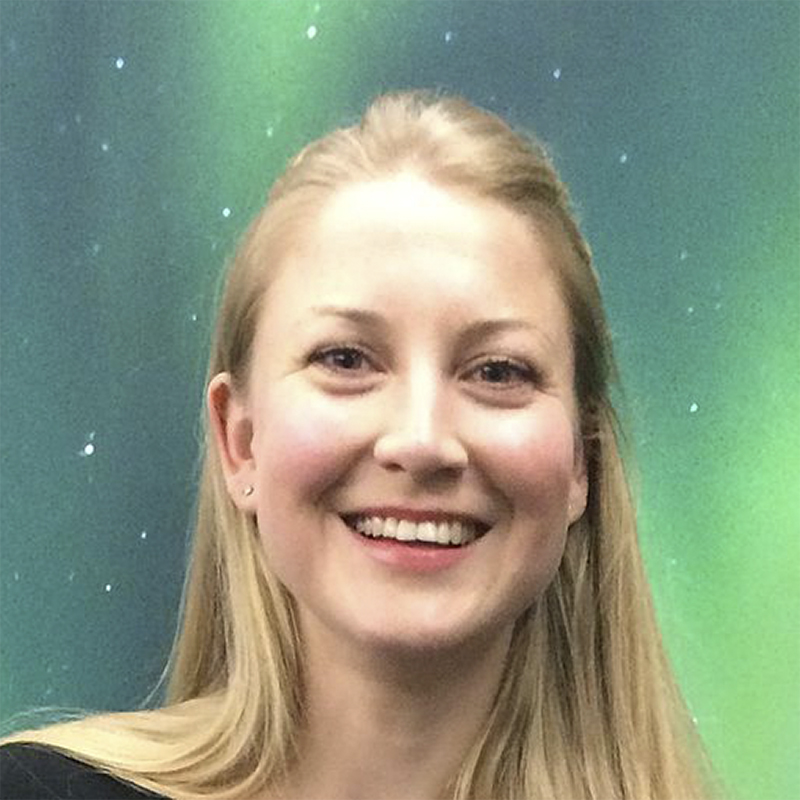The aurora is a polar light show caused by the interaction of charged particles flowing from the Sun — known as the solar wind — with Earth’s magnetic field.
This sets up a cycle of changing fields and currents that ultimately accelerates electrons into the Earth’s upper atmosphere (the ionosphere) on the night side of the planet.
These electrons collide with atoms in the atmosphere, mostly oxygen and nitrogen, transferring some of their energy to the atoms, which then release it as light.
This atomic process, happening to billions of atoms stretching up hundreds of kilometres into the atmosphere, creates the soft, moving light of the aurora.

Read more about the aurora:
- A brief history of aurora science
- Gallery: best readers' images of the aurora
- The ultimate guide to observing the aurora
The atoms within our atmosphere dictate the colours of the aurora. When an electron hits an atmospheric atom, it transfers some of its energy over.
This releases a flash of light, the colour (or more technically, the frequency) of which depends on how much energy it transferred over.
Counter-intuitively, bigger solar storms that deposit more energy in the magnetosphere result in more red and purplish-pink colours which is actually lower energy light than the blue end of the spectrum.
This is due to the changing air density in the atmosphere and the vagaries of atomic physics.
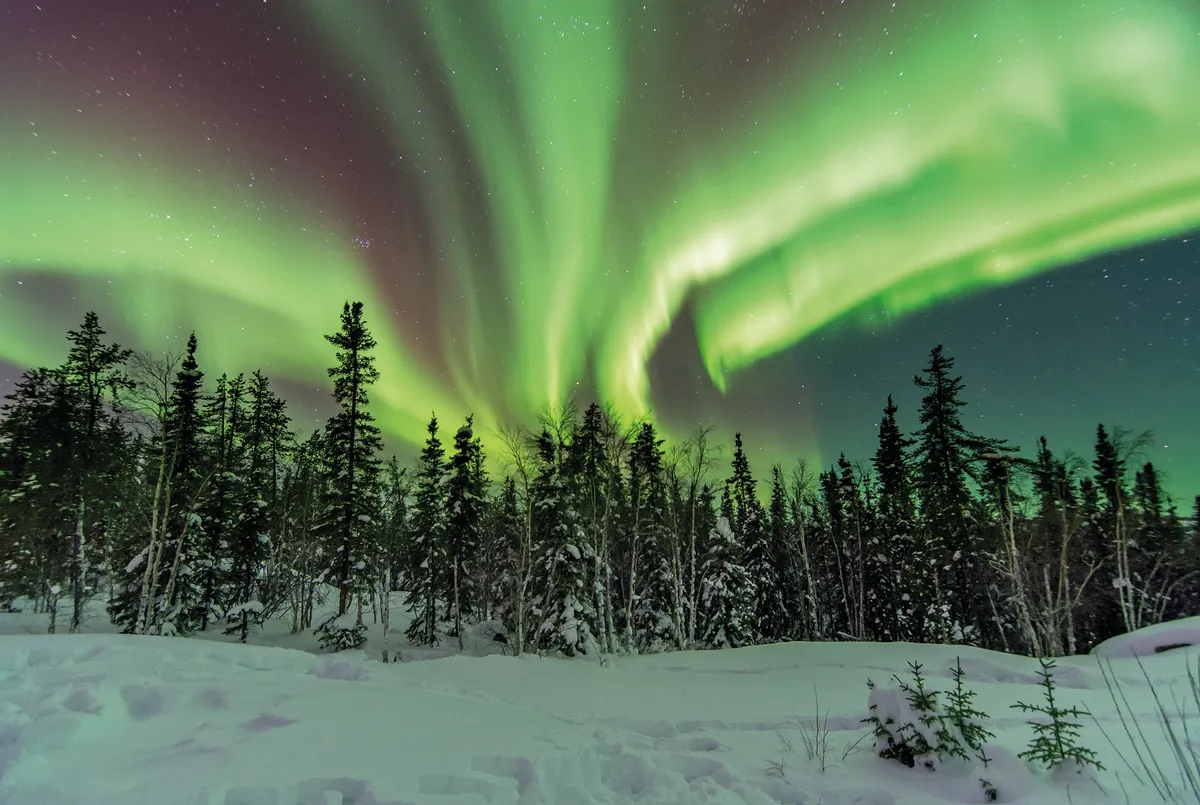
Atoms have various ‘energy levels’ available to them, and so can absorb different amounts of energy from the incoming electrons.
The same type of atom will have the same fixed energy levels. That is, every single oxygen atom will absorb the same amounts of energy to reach its ‘excited’ states, which means that the light released from oxygen will always be of the same frequency.
In this way the aurora has characteristic colours:
- The common green is given off by oxygen at altitudes around 100–150km up.
- Oxygen has another excited state which releases red light, but only at altitudes around 200–250km up where the atmosphere is much less dense.
- The blue, violet and pink colours are released by nitrogen molecules, and the nitrogen atoms emit a turquoise-green that may be obscured by the bright oxygen green.
- Hydrogen gives out a pink-hued crimson. These atoms are generally lower in the atmosphere and so in more energetic displays these colours can be seen at the bottom of a green band of aurora.
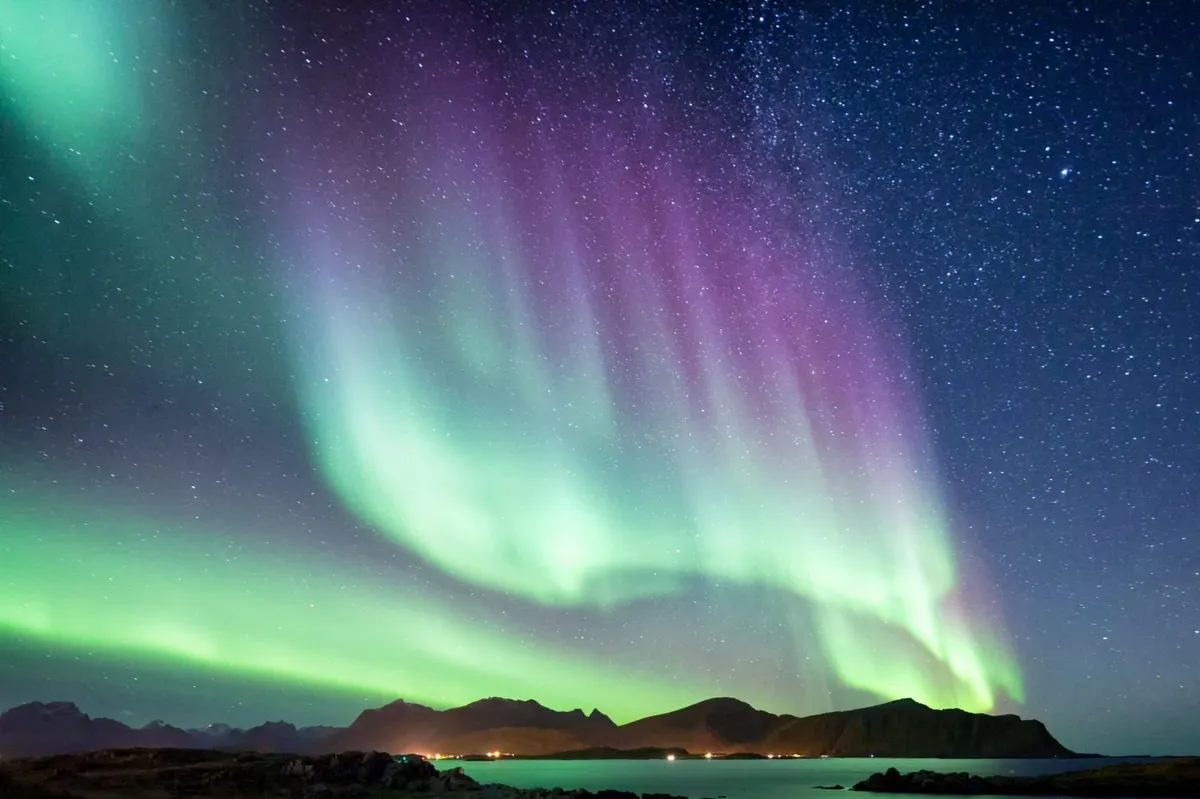
The aurora can take many shapes and forms. There is infinite variety in the twists, the depths, the rays, the colours and the brightness.
When scientists started making systematic observations it made sense to classify the aurora they were seeing into various types and subtypes for ease of comparison.
The Norwegian mathematician and early auroral photographer Carl Størmer published the first system of auroral classification in 1930 in the Photographic Atlas of Auroral Forms, which was later updated for the International Aurora Atlas, released in the 1960s.
Classification was by five main characteristics – condition, structure, form, brightness and colour. Form is often the most obvious.
The aurora may be discrete, appearing as an arc or a band, or diffuse like a patch of light or a veil across the sky. Or it may be rays coming down.
The aurora’s condition was defined as whether it was active, quiet, pulsating or coronal.
Active displays have fairly fast, obvious movement, while quiet displays move only very gradually, like the clouds drifting almost imperceptibly across the sky.
Pulsating displays pulse in brightness, and coronal displays burst directly overhead. Structure assessed the homogeneity of the form – was it smooth and regular or lined with horizontal striations or vertical rays?
Brightness was an index giving an estimation of the green oxygen emission. Colour was split into classes indicating whether the aurora was dominated by red and green or blue and purple.
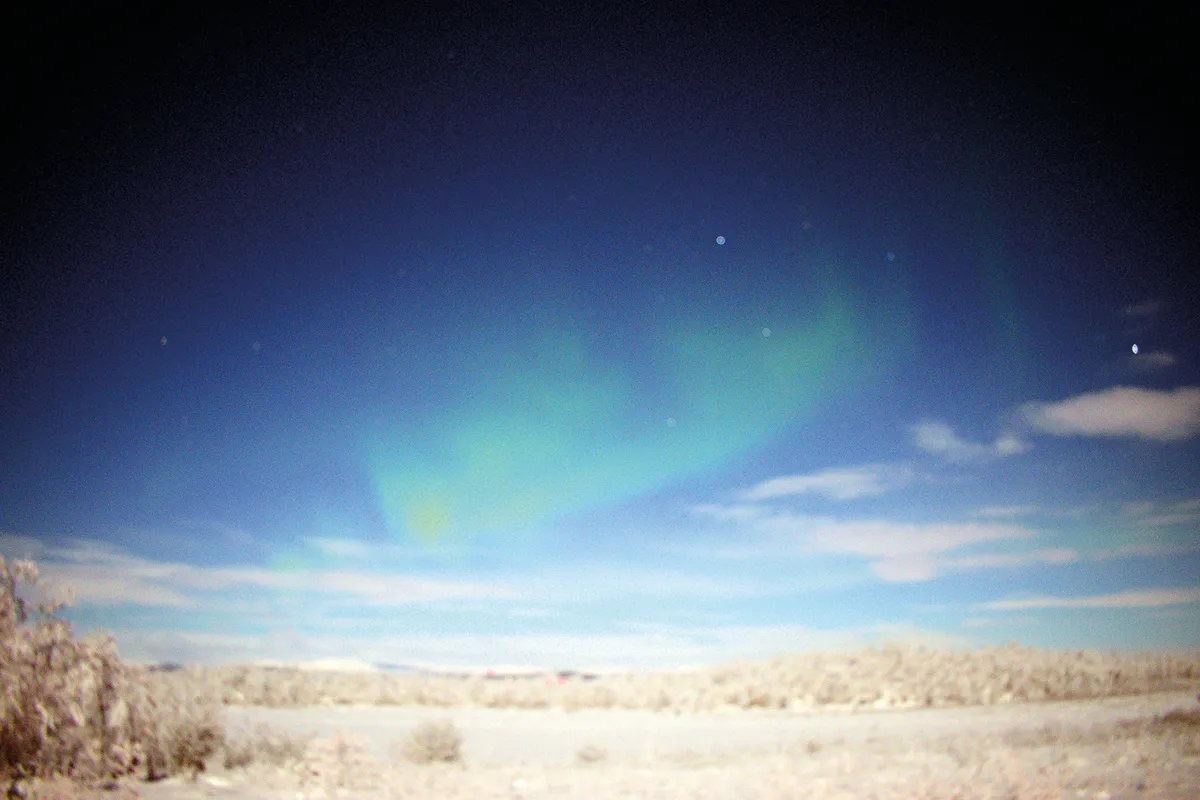
Researchers these days recognise that there are really only two main forms of aurora: the arc (discrete), and the patchy, pulsating aurora (diffuse).These are created by fundamentally different physical processes.
Whereas arcs are caused primarily by electrons being accelerated into the atmosphere when Earth’s magnetic field, stretched out by the solar wind, reconfigures itself, the dimmer pulsating aurora is thought to be caused by waves of charged particles scattering electrons into the atmosphere.
Conversely, several of the old-style classifications are simply different ways of looking at the same thing.
Imagine watching an auroral display. The ‘type’ of aurora you see depends on where the activity is happening relative to you.

Mostly, what you will see is an arc or band, or a number of arcs. A single, wide band viewed from underneath would look like an arched line in the sky.
Multiple twisted, rayed bands viewed from a distance look like curtains; but were you to look up from below, it would take the appearance of a corona, like a starburst overhead with the rays meeting above you. It’s not a new type of aurora; it’s perspective.
Think about walking through a city of skyscrapers. As you look up, the tall buildings around you appear to converge to a zenith.
Then cross the river, or take a boat ride from the quay, and look back to where you walked. Now the skyscrapers have a flattened, more regular form.
The individual buildings look like rays and their different heights give the city a wavy edge. It is the same city, just a very different view.

The shapes and structures of the aurora are not merely interesting and beautiful, they tell us about what is going on out in space.
“Intensity, colour, and auroral forms are all important characteristics of aurora for scientists,” says Dr Jennifer Carter, a magnetospheric physicist at the University of Leicester.
“Scientists can use large-scale movements of auroral phenomena to understand how the ionosphere and the more distant magnetosphere interact.”
The unpredictable, chaotic auroral movement arises because the aurora is a plasma – an electrically charged gas.
Plasmas are notoriously wily and dynamic, the charged particles’ movements creating feedbacks and instability.
The unstable nature of plasma explains some of the erratic movement of aurora, particularly during more energetic displays.
Rayed structure is related to charged particles travelling down magnetic field lines into the atmosphere.
“Relative intensity between different aurora colours depends on the composition of the atmosphere and the energy of the incoming particles,” says Carter.
That night I watched the aurora from the boat heading towards Tromsø, the display was quiet and the pale grey-green bands twisted languidly in the icy air.
But I knew that with a little more of a kick from the Sun, the next time I stood there to watch, it could be very different.
Types of aurora
Over the years, astronomers have created many names to describe the changing shapes of the aurora. Displays often feature several of these forms combined together to create a truly stunning show.
And just as no two aurora are the same, neither are any two sightings of the same aurora, as the shape a display appears can often vary dramatically depending on where you are in relation to the lights in the sky.
Curtains

Curtains are a common form of rayed band viewed from a distance, which takes a hanging, wavy appearance. They may also be referred to as drapes or draperies, particularly in historical accounts.
Arcs

An arc is defined as a simple curve of light with a smooth lower border. Auroral displays often start as an arc. They can stretch thousands of kilometres horizontally, hundreds of kilometres upwards, but are only a few tens of kilometres thick.
Bands
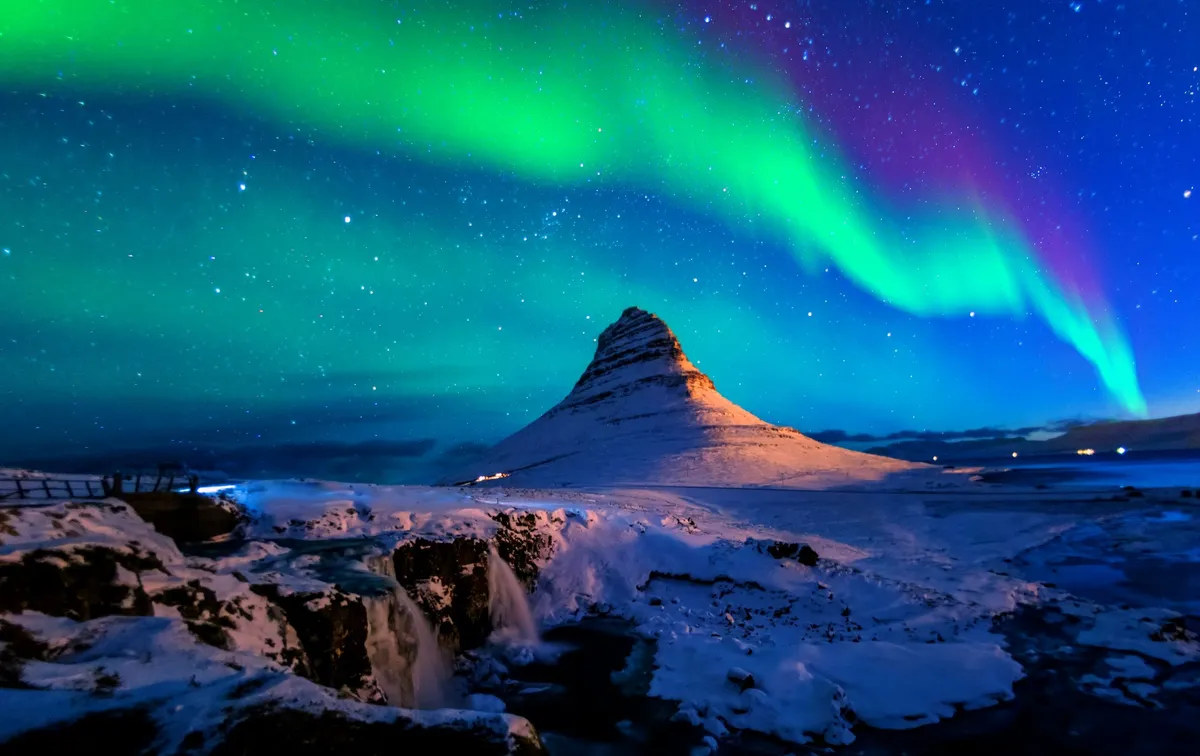
FEBRUARY / Getty Images
A band is similar to an arc — indeed it is now recognised as a form of arc — but with an irregular, wavy lower border rather than a smooth one. They may look serpentine in structure, curving and twisting.
Rays

Rays are shafts of luminosity coming down from above, or they are sometimes described as pillars of light stretching upwards. Rayed structure can also be seen in the other auroral forms, such as striations seen in an arc or band. When the aurora is more active these rays can appear to move or pulse in the band.
Coronae
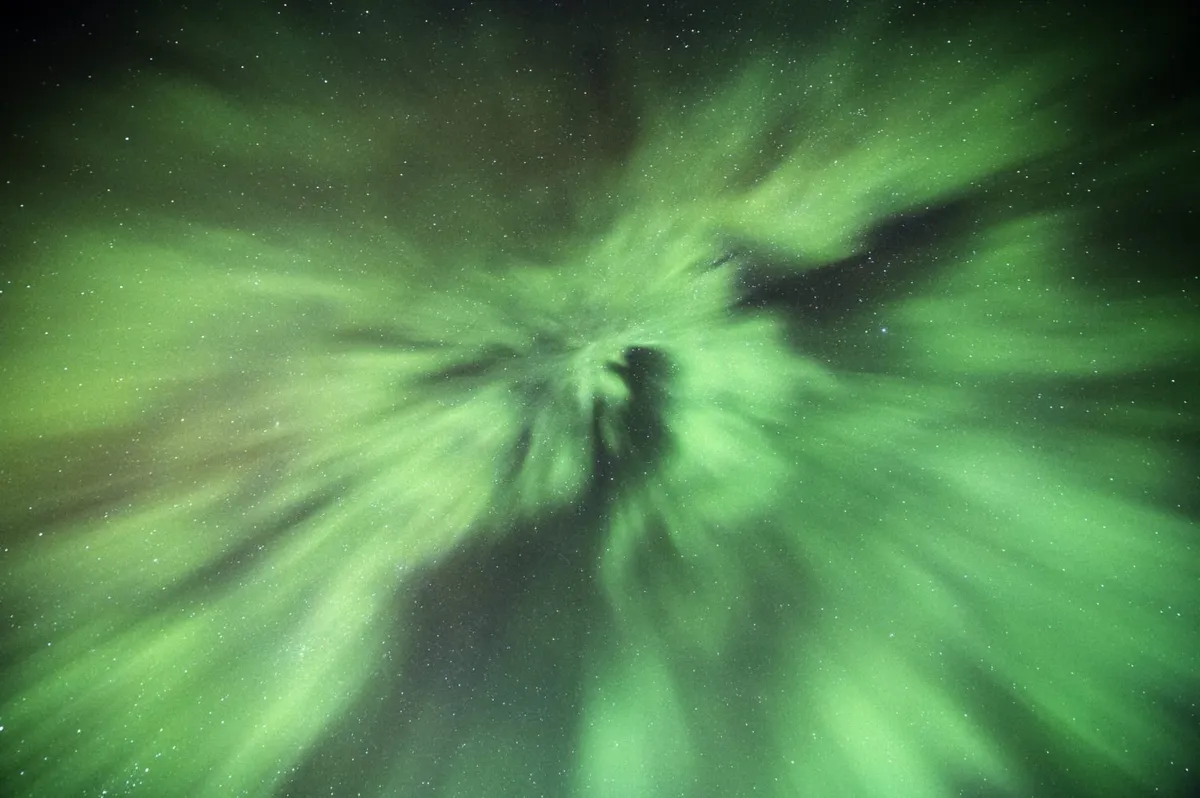
Named after a crown, coronae are multiple rays converging to a zenith above the viewer, appearing as a large starburst-type formation overhead. The corona is widely considered to be the most impressive type of aurora, and they occur during strong overhead activity.
Patches

Patches are regions of diffuse, less concentrated glow that appears in blobs and may pulse in brightness. Patchy pulsating aurora is much dimmer and less common than the arc forms of aurora, and the generation mechanism is different. Electrons are scattered into the atmosphere by a plasma wave called a whistler.
Dr Melanie Windridge is a plasma physicist, speaker and author of Aurora: In Search of the Northern Lights. This article originally appeared in the February 2020 issue of BBC Sky at Night Magazine.
